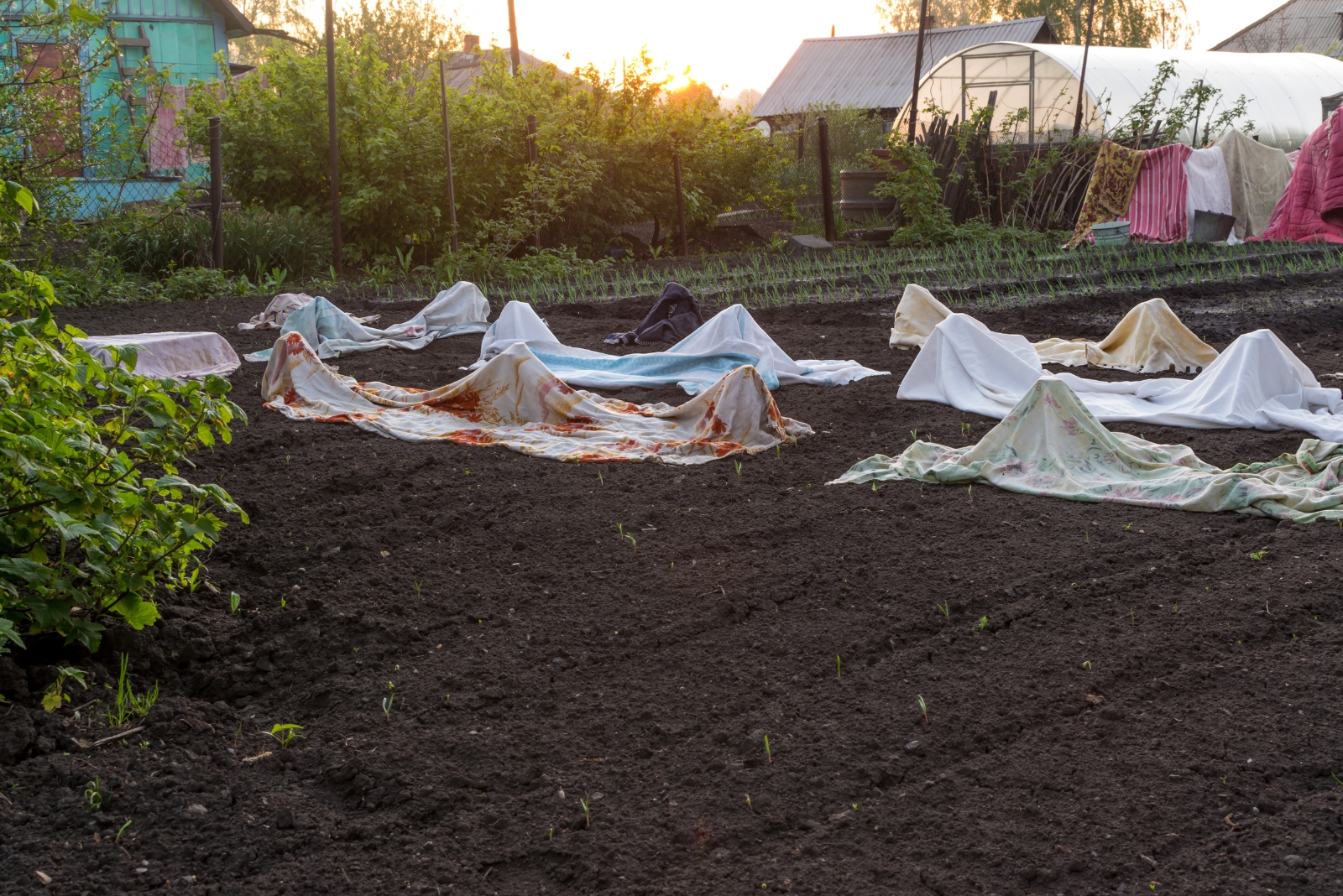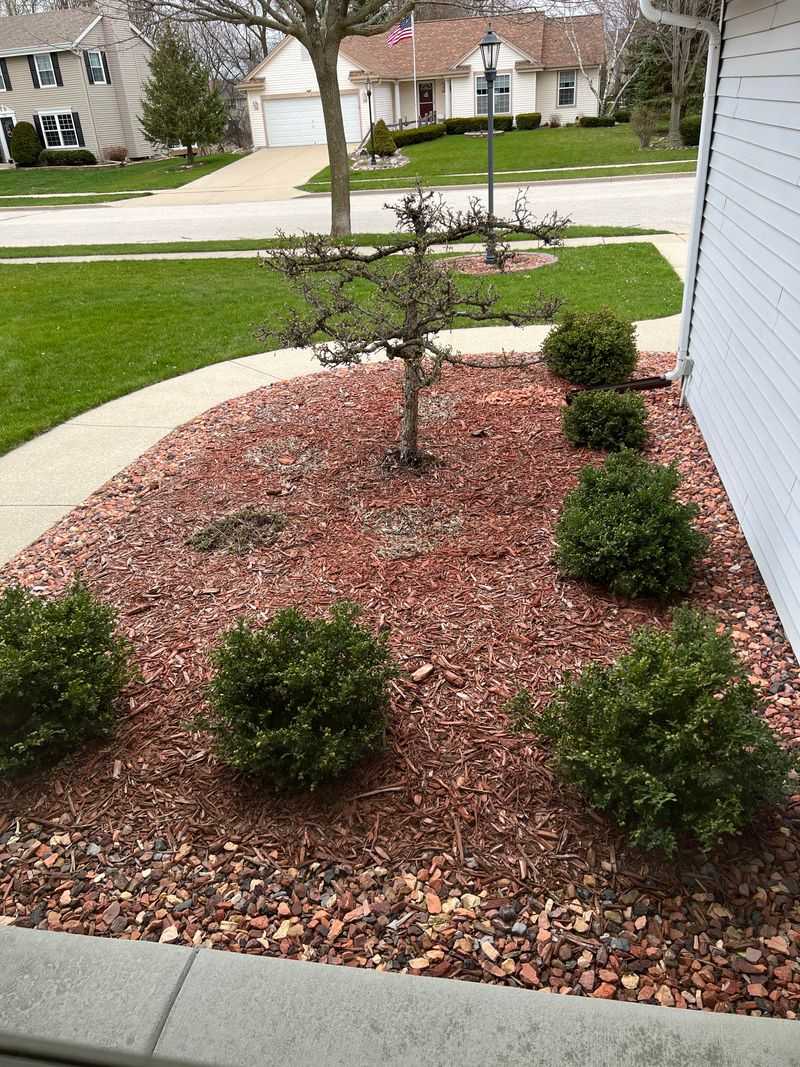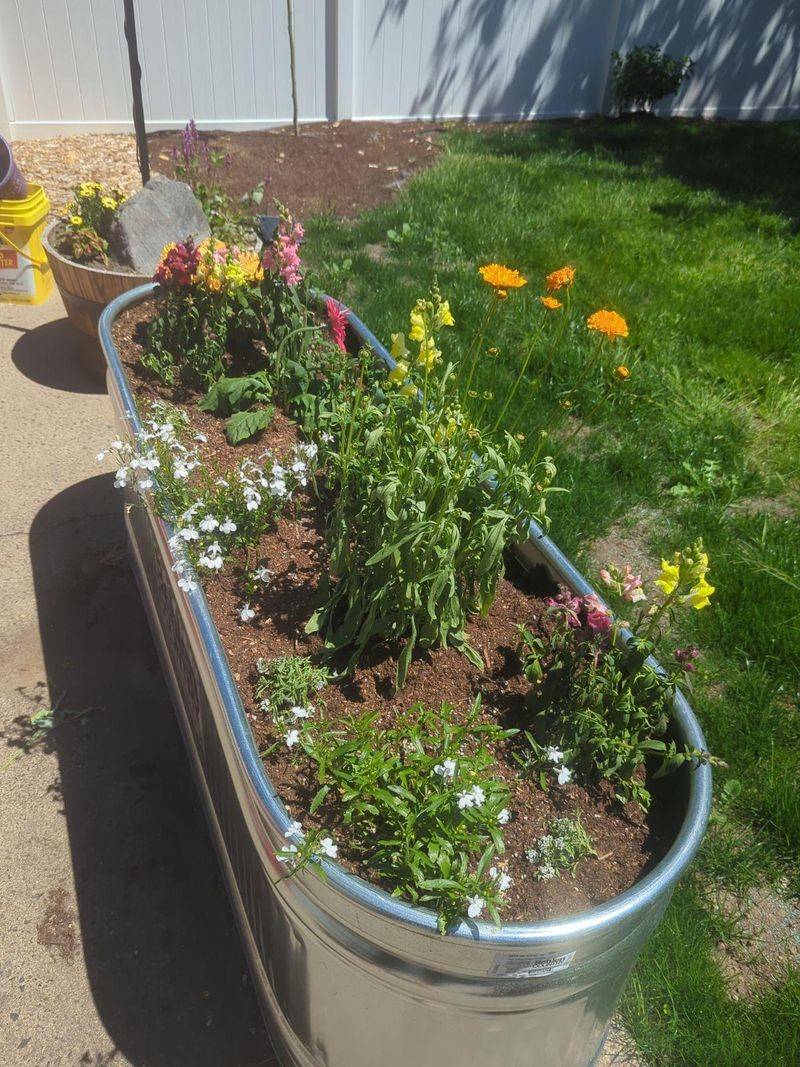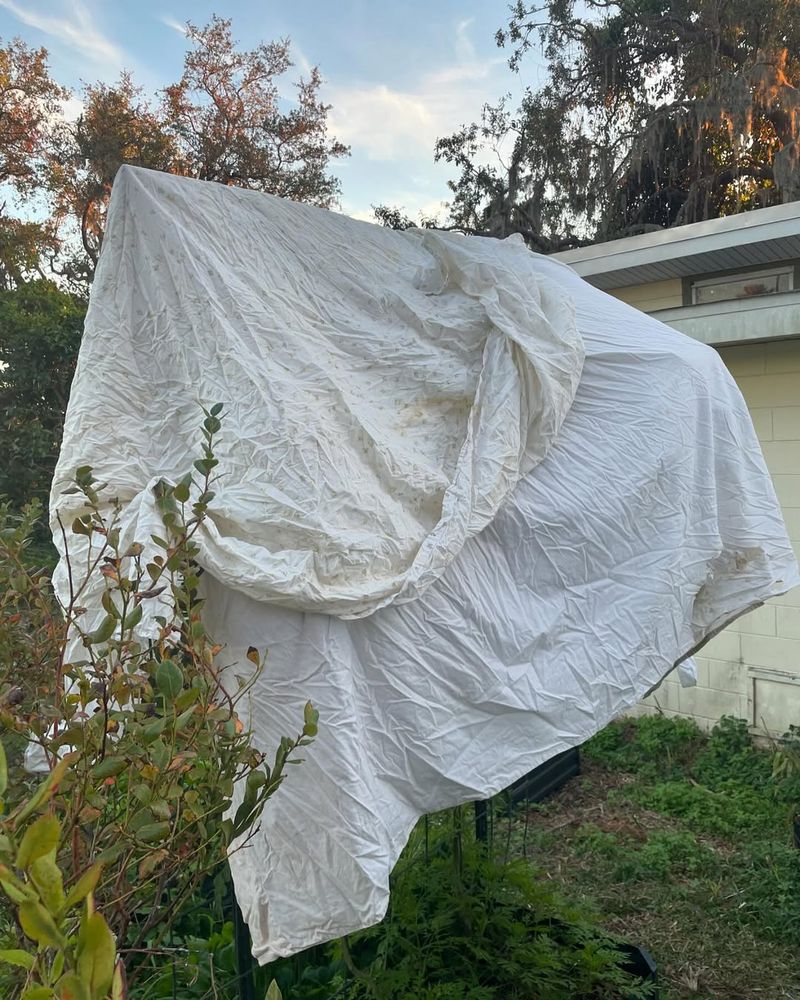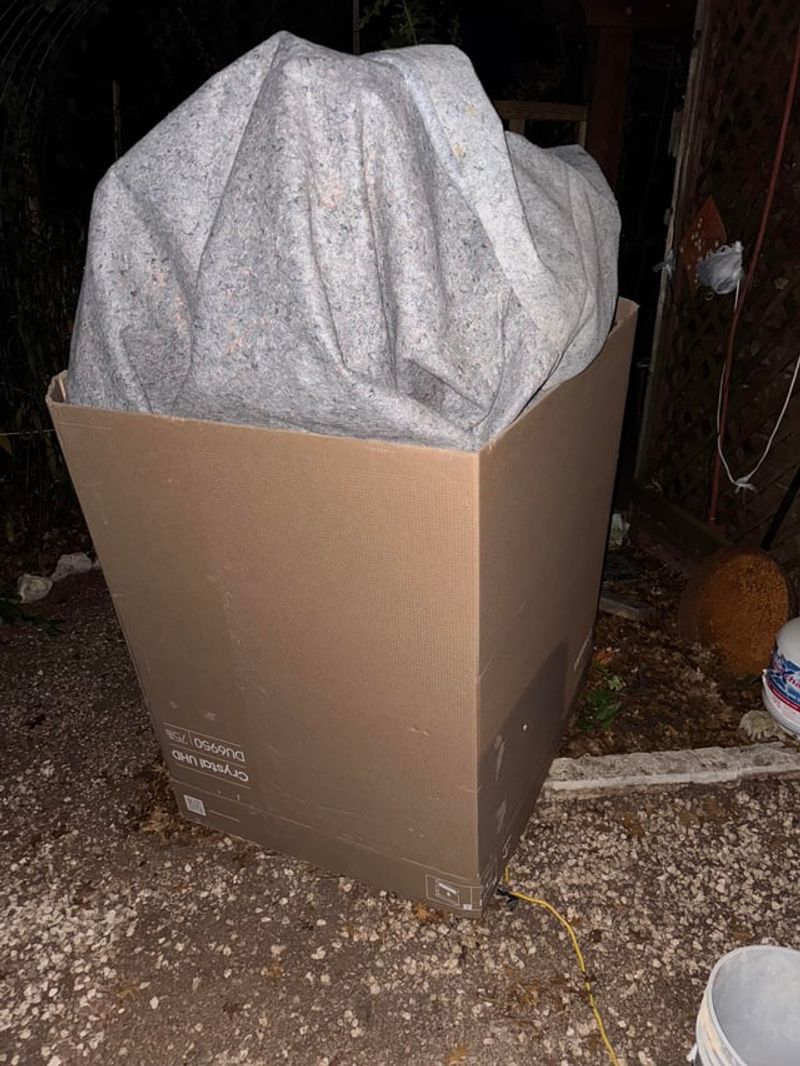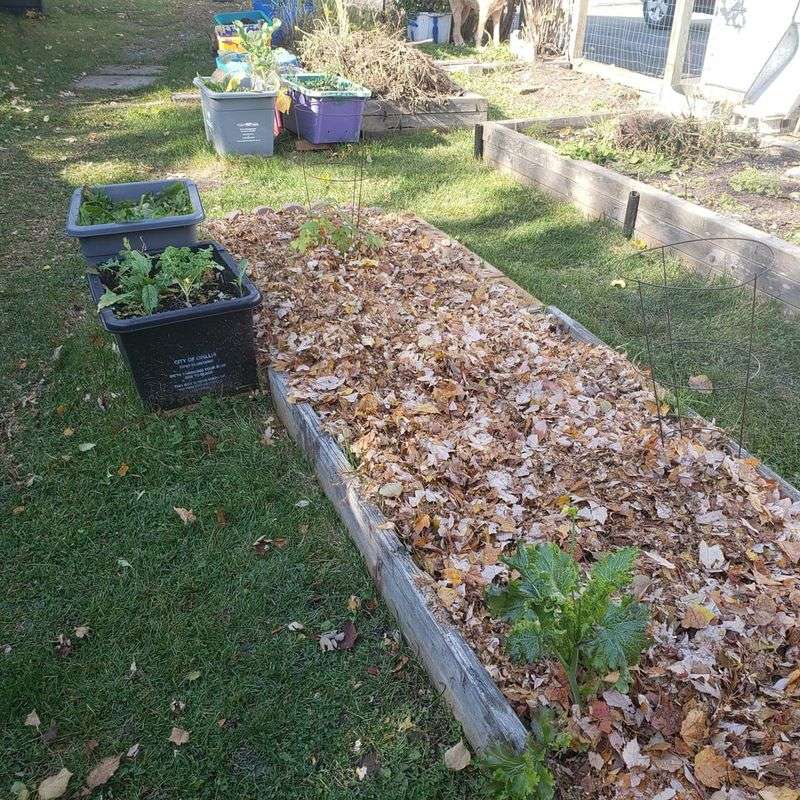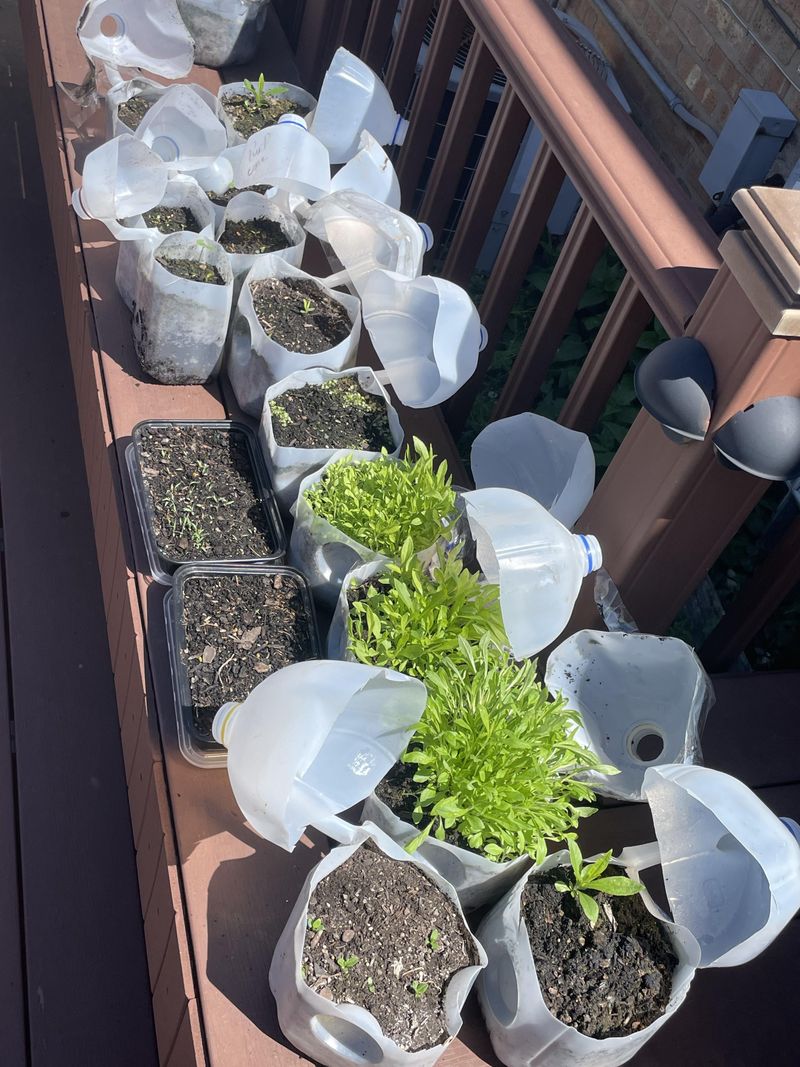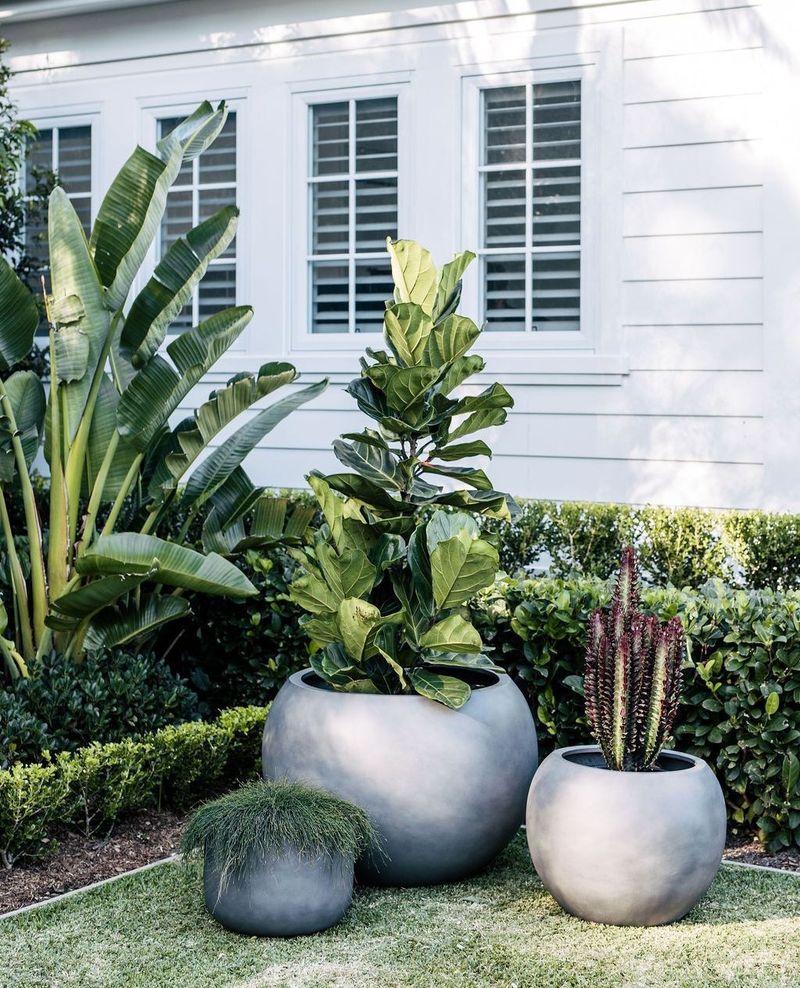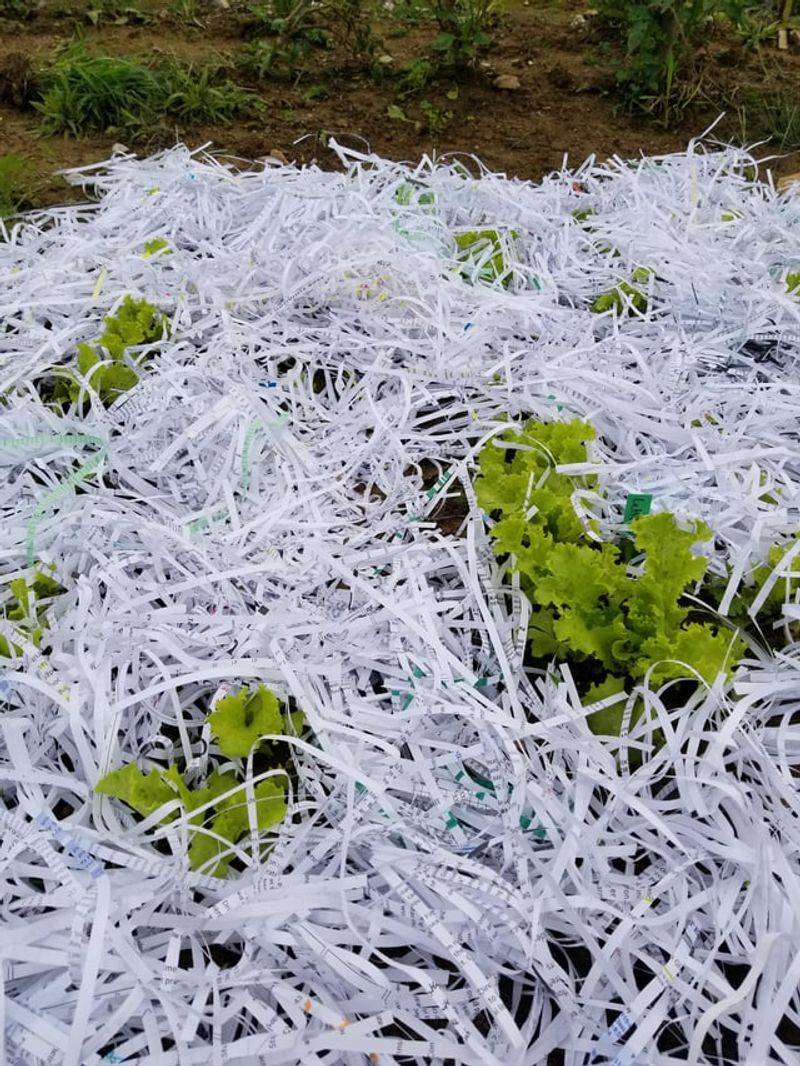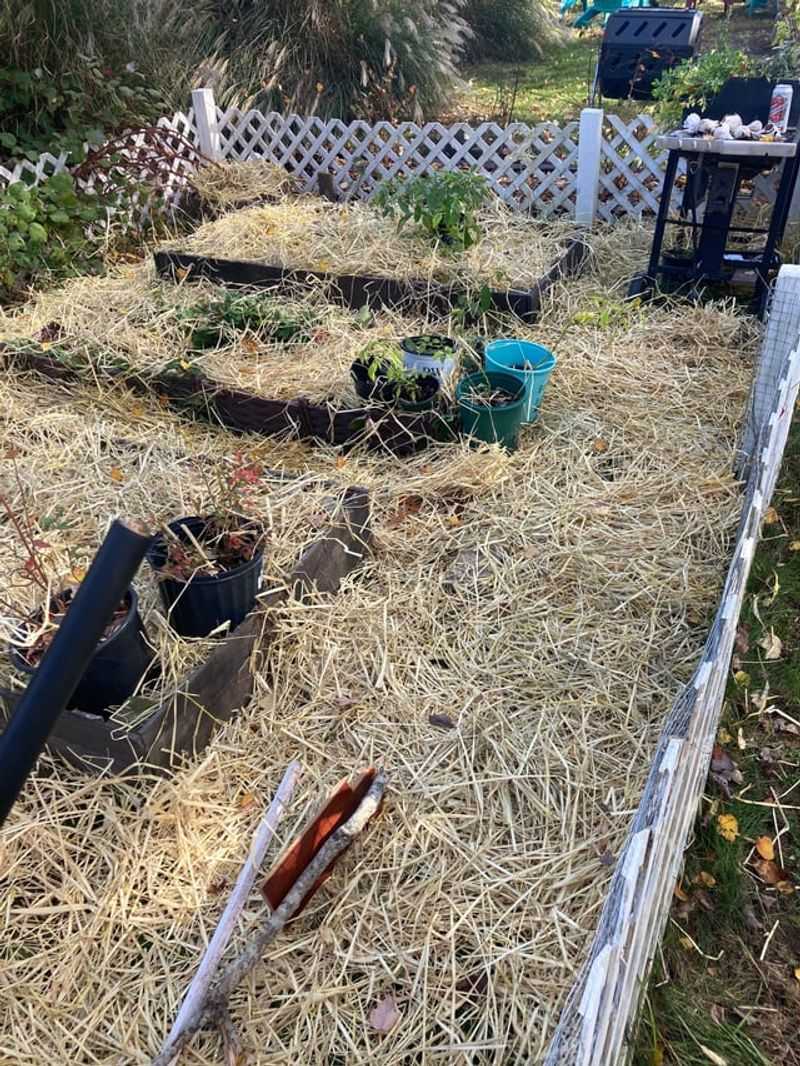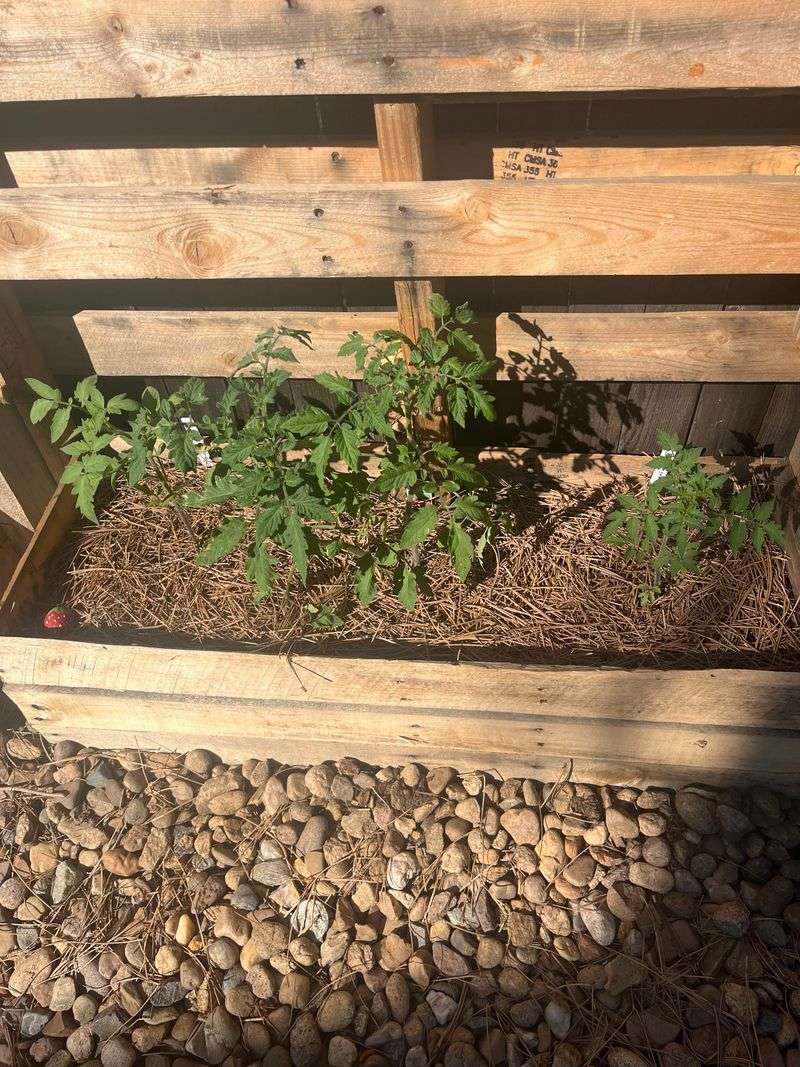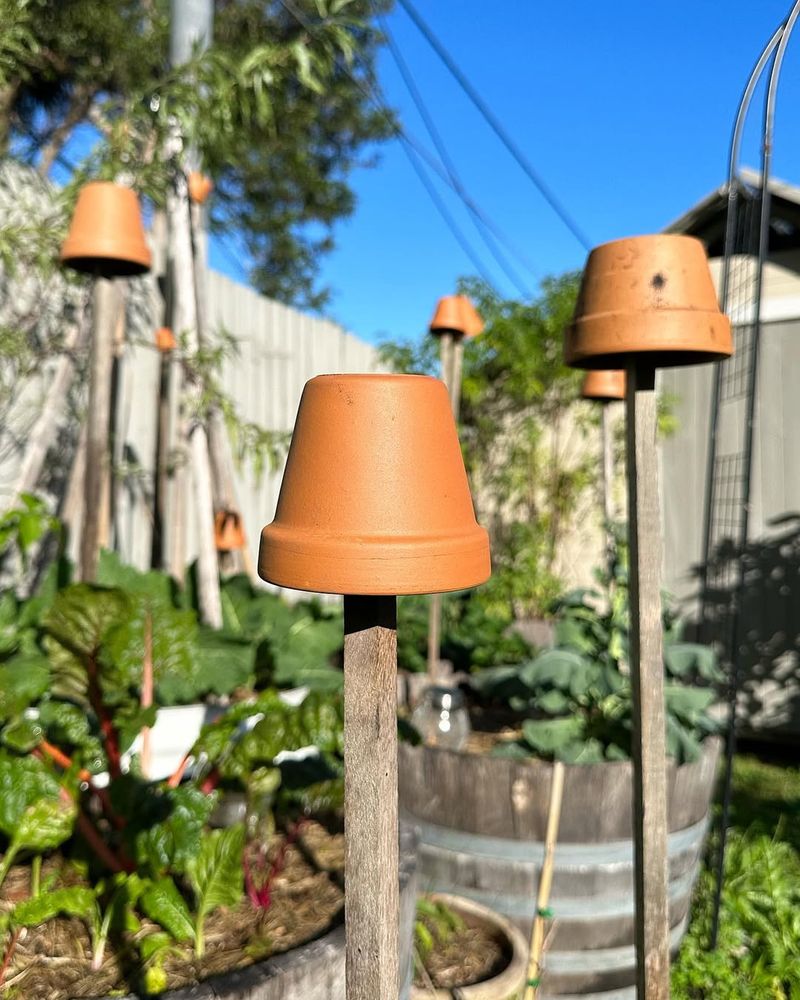Frost can hit North Carolina gardens faster than you expect, and perennials are often the first to feel it. Instead of spending a fortune on fancy covers, there are clever, budget-friendly ways to shield your plants.
I’ve put together eleven tricks that really work without breaking the bank. With these tips, your North Carolina perennials can survive the chill and thrive when spring returns.
1. Pile Mulch Around Plant Bases
A thick layer of mulch works wonders for keeping roots warm during North Carolina’s unpredictable cold snaps. Spread wood chips, shredded leaves, or pine straw around the base of each perennial, creating a 3-4 inch protective blanket.
This insulation traps heat from the soil and prevents freezing temperatures from penetrating deep into the ground. Pull the mulch away slightly from stems to avoid rot, but keep it close enough to shield roots effectively.
2. Water Plants Before Nightfall
Moist soil holds heat better than dry ground, making this simple trick surprisingly effective. Water your perennials thoroughly in the late afternoon before temperatures drop overnight.
The moisture releases heat slowly as it cools, creating a warmer microclimate around your plants. Many North Carolina gardeners swear by this method during those tricky spring and fall frost warnings.
Just avoid soaking leaves directly, as wet foliage can freeze and cause damage.
3. Drape Old Bedsheets Over Plants
Your linen closet holds one of the best frost protection tools available. Old bedsheets, tablecloths, or curtains make excellent temporary covers when draped over perennials before sunset.
The fabric traps warm air rising from the soil while allowing plants to breathe throughout the night. Anchor the edges with rocks or bricks so wind doesn’t blow them away.
Come morning, remove the sheets once temperatures rise above freezing to let sunshine reach your plants.
4. Stack Cardboard Boxes as Shelters
Empty cardboard boxes from online deliveries become instant plant protectors with zero cost involved. Place boxes over smaller perennials when frost threatens, creating quick shelters that block cold wind and trap warmth.
The cardboard insulates surprisingly well for short-term protection during North Carolina’s occasional frosty nights. Weight them down with stones so they don’t blow away.
Remember to remove boxes each morning so plants receive sunlight and air circulation during warmer daytime hours.
5. Create Leaf Piles for Insulation
Fall cleanup becomes frost protection when you pile raked leaves around tender perennials. A generous mound of leaves acts like a cozy blanket, insulating plants from temperature swings.
This method works especially well for North Carolina gardeners since autumn leaves are abundant and completely free. Pack leaves loosely around stems and over the root zone, letting air circulate while still providing warmth.
Leaves break down slowly, adding nutrients to soil as an extra bonus.
6. Position Plastic Milk Jugs Around Plants
Empty milk jugs filled with water create solar heat batteries for your garden. Place several jugs around perennials during the day, letting sunshine warm the water inside.
As night temperatures drop, the water releases stored heat gradually, keeping nearby plants warmer. This clever trick helps North Carolina gardeners extend the growing season without spending a dime.
Dark-colored jugs work even better since they absorb more heat throughout sunny days before those chilly evenings arrive.
7. Arrange Potted Plants in Clusters
Grouping container perennials together creates a shared warmth zone that helps everyone survive cold nights. Push pots close together so their combined mass holds heat better than individual plants would alone.
Position the cluster against a south-facing wall for extra warmth from stored daytime heat. North Carolina gardeners with patios or decks find this arrangement particularly useful.
The plants essentially huddle for warmth, just like people do when temperatures drop unexpectedly during spring or fall.
8. Spread Newspaper Layers Over Beds
Yesterday’s news becomes tomorrow’s plant protection when you layer newspapers over garden beds. Spread several sheets of newspaper over perennials before cold nights, covering the entire plant loosely.
The paper insulates while remaining lightweight enough not to crush delicate foliage. Many North Carolina gardeners appreciate how easy newspapers are to apply and remove quickly.
Wet the paper slightly so it stays in place, or anchor edges with small rocks to prevent wind from scattering your protection.
9. Build Hay Bale Windbreaks
Cold wind causes more frost damage than low temperatures alone, so blocking it makes sense. Stack hay bales or straw bales on the north and west sides of perennial beds to create effective windbreaks.
The bales deflect icy breezes while the hollow stems inside provide excellent insulation. North Carolina’s variable spring weather makes this setup particularly valuable for protecting emerging perennials.
Bonus benefit: the hay eventually decomposes into useful compost for enriching your garden soil over time.
10. Cover Soil with Pine Needles
Pine needles scattered abundantly across North Carolina make perfect free frost protection material. Spread a thick layer of pine straw over the soil around perennials, creating an insulating carpet that moderates temperature changes.
The needles allow water to penetrate while trapping air pockets that keep roots warm during cold snaps. This method looks tidy and natural in the landscape.
Pine needles also acidify soil slightly, which many popular perennials actually prefer for optimal growth throughout the seasons.
11. Overturn Clay Pots on Small Plants
Extra terracotta pots sitting in your shed become instant frost shields when placed upside down over vulnerable perennials. The clay material insulates well while the pot shape creates a protective dome.
Simply flip pots over small plants before sunset when frost threatens North Carolina gardens. The thick walls block wind and trap ground warmth rising around the plant.
Remove pots each morning once temperatures climb, allowing sunshine to reach your perennials throughout the warmer daylight hours ahead.

